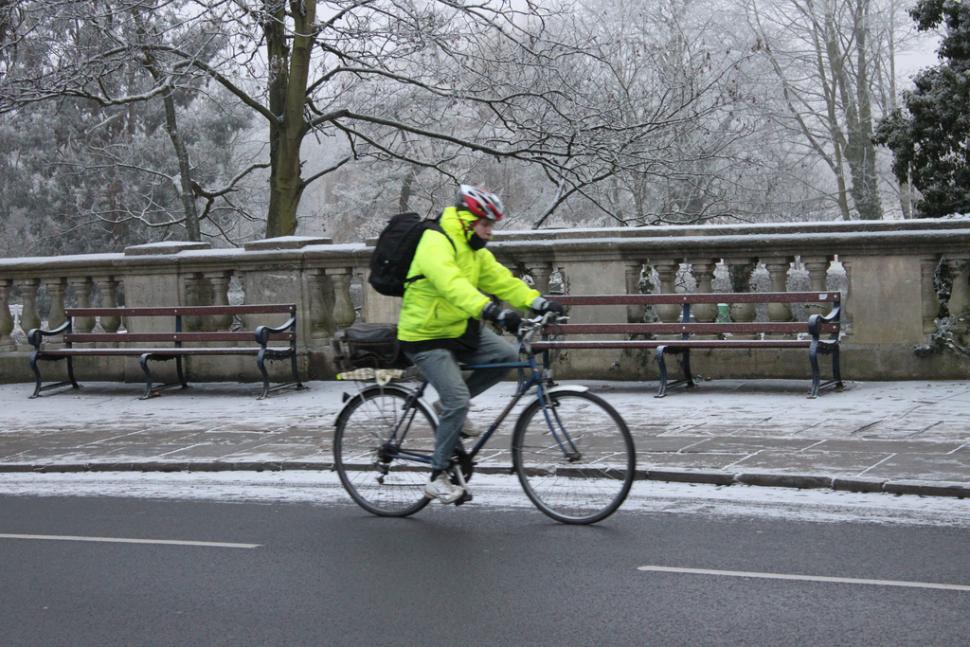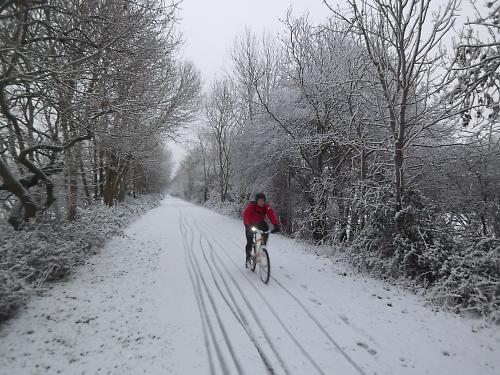- News
- Reviews
- Bikes
- Components
- Bar tape & grips
- Bottom brackets
- Brake & gear cables
- Brake & STI levers
- Brake pads & spares
- Brakes
- Cassettes & freewheels
- Chains
- Chainsets & chainrings
- Derailleurs - front
- Derailleurs - rear
- Forks
- Gear levers & shifters
- Groupsets
- Handlebars & extensions
- Headsets
- Hubs
- Inner tubes
- Pedals
- Quick releases & skewers
- Saddles
- Seatposts
- Stems
- Wheels
- Tyres
- Tubeless valves
- Accessories
- Accessories - misc
- Computer mounts
- Bags
- Bar ends
- Bike bags & cases
- Bottle cages
- Bottles
- Cameras
- Car racks
- Child seats
- Computers
- Glasses
- GPS units
- Helmets
- Lights - front
- Lights - rear
- Lights - sets
- Locks
- Mirrors
- Mudguards
- Racks
- Pumps & CO2 inflators
- Puncture kits
- Reflectives
- Smart watches
- Stands and racks
- Trailers
- Clothing
- Health, fitness and nutrition
- Tools and workshop
- Miscellaneous
- Buyers Guides
- Features
- Forum
- Recommends
- Podcast
OPINION
Cycling and the law: What are your rights if you suffer an accident on icy roads?
 winter cycling cold (Tejvan Pettinger).jpg
winter cycling cold (Tejvan Pettinger).jpgA lot of people, me included, rely on their bike as their primary mode of transport on their commute. It is very much part of my weekly routine, whatever the weather.
I certainly ride more cautiously in freezing temperatures, and generally have the luxury of sticking to main roads or bus routes where I can be confident the roads should have been gritted. Highway authorities categorise roads depending on their size and importance. Often bus routes and roads providing access to hospitals are top priorities.
Many cyclists do not have this luxury and rely on cycle paths, or they cycle in less urban areas. The odds of them coming across icy paths or roads that haven’t been gritted are much higher – and so is the risk of coming a cropper because of the ice.
It’s practically impossible to see ice before you hit it so the only way to guard against it is to take a view on whether or not to cycle in the first place. This is not such an easy decision to make if you don’t have alternative means of transport. The consequences of hitting ice and falling off can be serious – a fractured collarbone or shoulder is not uncommon.
I often receive phone calls and emails from cyclists asking about their rights when snow/ice has caused them to fall. So, what are your rights?
The different viewpoints when it comes to ice on the road
You might see things in one of the following ways:
- I can bring a claim for my injuries and/or financial losses against the local authority whenever I have an accident on an icy road;
- I have no rights, I voluntarily accepted the risk of this type of accident when I decided to go out cycling in wintery conditions;
- The highway authority should have (and implement) a winter weather policy so that it grits routes in order of priority. My rights depend on whether the ice was a danger, the financial means of the highway authority, and whether the authority took reasonable care for my safety.
What does the law say about accidents on icy roads?
The highway authority (often the local council) has a duty to ensure (as far as reasonably practicable), that safe passage along a highway is not endangered by snow or ice.
The fact that you suffer an accident caused by ice or snow on a road which has not been gritted does not necessarily mean that a claim for compensation against the local authority will succeed.
Why? Well, a route isn’t necessarily dangerous simply because you had an accident. You must go further and establish that the ice was the sort of danger that the local authority was reasonably expected to guard against. In assessing this, the court will look at the extent of the ice, whether there were other accidents and the extent and manner of the use of the road/cycle path.
If you get over this hurdle, the onus shifts onto the highway authority (to defeat your claim) to prove it took reasonable care to ensure the highway was not dangerous.
If the highway authority can prove that it took reasonable care, your claim is likely to fail and you would not be compensated for your injuries, damaged bike and equipment, or your other expenses; such as private treatment, time off work, or paying for alternative transport.
The following points are likely to be most relevant when considering whether the highway authority took ‘reasonable care’:
- their winter weather (gritting) policy was adequate and properly implemented (including monitoring the weather)
- they chose to prioritise sensible routes to be gritted; and/or
- their financial resources available to grit minor roads or cycle paths.
You can see that these cases are very fact-specific. Broadly speaking, if your accident happens in an area where the highway authority implements a sensible gritting policy, prioritises the routes to be gritted and acts reasonably given its financial constraints, your claim is unlikely to succeed.
To avoid opening the floodgates to claims of this nature (there would be a wider application to pedestrians and motorists) it is not surprising that it is so difficult for cyclists to succeed with claims for damages following accidents caused by snow and ice.
It’s annoying that the main routes used by motor vehicles are the priority and therefore the perception that motor vehicles should be our primary mode of transport is reinforced. I really think local authorities should set aside a proportion of their gritting budget for keeping popular cycle paths and cycling routes safe for those of us who prioritise cycling.
After taking up cycling to commute between Bristol and Bath, Mark has seen all sorts of incidents and has become a keen advocate for cycling and protecting the rights of cyclists.
Mark is now lucky enough to combine his passion for cycling with his day job as a cycling solicitor at RWK Goodman.
More Opinion
Latest Comments
- kcr 2 hours 51 min ago
I think Livingston (no "e") has the best cycling infrastructure I have seen in Scotland. It has an extensive network of paths that are actually...
- kcr 3 hours 31 min ago
I'd say it is an extremely rare condition for most cyclists or runners.
- ErnieC 6 hours 17 min ago
or Team Bahrain ... selective outrage.
- newbankgyratory 7 hours 19 min ago
This website offers suitable data: https://www.automobiledimension.com/large-suv-4x4-cars.php
- newbankgyratory 7 hours 52 min ago
Perhaps park the goods in a US Customs Bonded warehouse and then import them out of there when the tariff nonsense settles down?...
- Dnnnnnn 5 hours 48 min ago
Good to see a road.cc review of what must be one of the UK's best-selling 'proper' road bikes....
- PRSboy 8 hours 47 min ago
Another thing ruined by the Americans
- Miller 10 hours 6 min ago
Nice to see WvA featuring in the finale.
- Miller 10 hours 9 min ago
I have known more than one elder statesman of the club die of a heart failure while out on a ride. Sometimes I feel that's about to happen to me,...
- Pub bike 10 hours 26 min ago
Via the "wireless active steering system".

Add new comment
4 comments
What are your rights if you get rammed of your bike and then get beaten up by a complete lunatic ?
If we are following the typical news article comment sections, you need ask yourself:
Was there any other action or interaction that may have transpired where you offended the sensibilities of the driver in any way?
If you can answer "yes" to any of these questions then you unfortunately incited the diver to take aggressive and violent actions against you. The court of public opinion now finds you guilty. If you can answer "no" to all of these questions, you can probably answer "yes" at some point in your life, therefore the court of public opinion now finds you guilty.
Practically none, even if you have footage, witness statements and a confession
If you have compelling evidence then you MUST pursue. If you are a British Cycling member their legal team will advise.
This happened to me in the Spring, fortunately in an urban area where there were at least three witnesses. Avon & Somerset Police pursued a prosecution and the offender pleaded guilty in court to careless driving and assault. Although dangerous driving would certainly have been more appropriate, the offender received 240 hours community service and a 6 month driving ban. I'm now pursuing a civil case for damages. I hope this not only deters this individual in future, but also sends a signal to other 'careless' drivers that this is not accepted on UK roads.